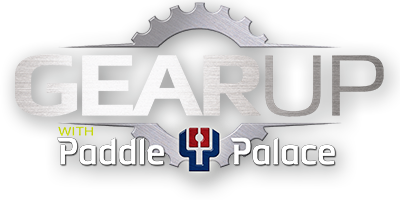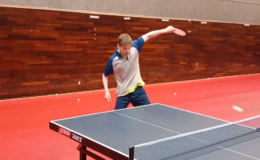Courtesy of Seth Pech of PechPong
Seth’s Equipment – Tibhar VS Unlimited Blade with Tibhar K3 on both forehand and backhand.
Quick Tips with links
Chapters
00:00 Intro
01:29 Preparation Footwork
03:07 Deep Push To Middle
04:45 Medium Long Low To Middle
06:09 Medium Long High to Middle
07:43 Low Wide To Forehand
08:48 Forehand Wide Over the Table
09:57 Deep Wide Fast Push to Forehand
11:24 Normal Push To Forehand
12:01 Moving Into the Table When Out of Position
12:55 Wide Push to Backhand
13:32 How to Practice These Skills
15:52 Ending
Mastering Table Tennis Footwork: A Comprehensive Guide
Introduction
Welcome back to Pech Pong! In this detailed guide, we delve into mastering table tennis footwork, covering a range of scenarios and movements crucial for efficient play. From handling serves to responding to different ball placements, we’ll break down each scenario and offer step-by-step guidance on executing the appropriate footwork.
The Foundation: Preparation Footwork
Preparation after serving or facing a short push is crucial. It sets the foundation for effective movement. Quick movement into a neutral position, avoiding lazy footwork, and creating space from the table are key elements here. For the receiving side, options include a larger jump back or two smaller jumps, allowing for micro-adjustments.
Handling Specific Scenarios
1. Dealing with Deep Balls to the Middle
The most physically demanding scenario requires precise movement away from the table. Moving slightly left for right-handed players and creating space for a powerful stroke is essential. Quick return to position is crucial, influenced by where the ball is directed.
2. Responding to Medium-Long Low Balls
Efficient movement after a low ball near the table is crucial. Quick return after a forehand stroke is emphasized here to prepare for potential blocks or counters.
3. Approaching Medium-Long High Balls
Mastering movement for high balls over the table involves a fluid two-step approach, allowing for an aggressive swing. The timing of the backswing is crucial here.
4. Handling Low, Wide Forehand Balls
Moving towards the wide forehand corner involves initiating with the left foot and taking a sizable step with the right, ensuring proximity to the table for an impending stroke.
5. Adapting to Wide, High Forehand Balls
Two distinct movements cater to this scenario, enabling deceptive body positioning and effective shot execution over the table.
6. Responding to Fast, Wide Forehand Pushes
Similar to previous movements, an emphasis on moving closer to the table and cutting angles off is emphasized for a more effective response.
7. Practice Methods for Skill Development
Several practice methods aid in integrating these movements into your game. Shadow practice, simulated scenarios with a partner, multiball drills, and robot training are highlighted as effective methods to refine footwork skills.
Conclusion
Mastering table tennis footwork is a blend of precision, speed, and adaptability. Practicing and perfecting these movements, responding to various scenarios, and incorporating them into your gameplay will significantly enhance your performance on the table. Share your favorite movement or insights in the comments. Keep practicing and playing!
This breakdown covers essential footwork techniques in table tennis, detailing various scenarios and movement strategies to enhance gameplay. Whether you’re responding to serves or adapting to different ball placements, mastering these techniques is integral to excelling in the sport.






